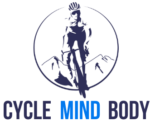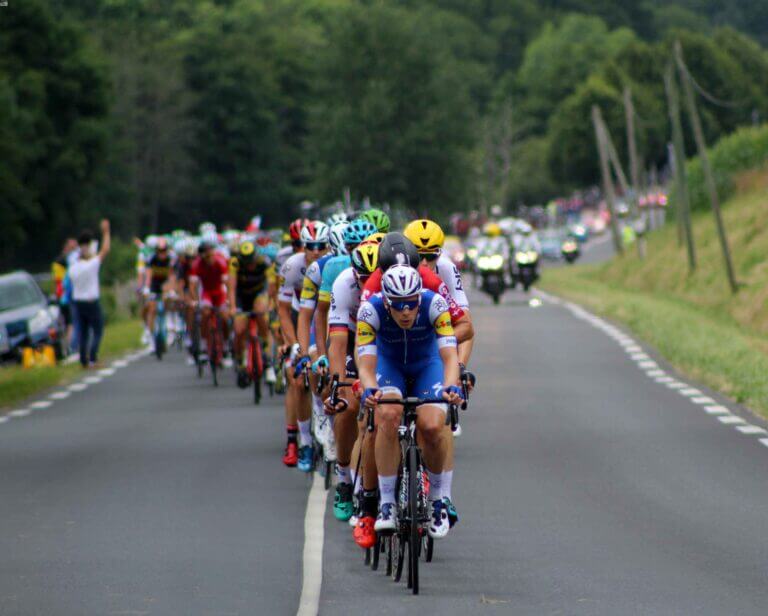The Tour de France, one of the most prestigious and grueling cycling races in the world, demands immense physical stamina and endurance from its participants. A single day of racing in the Tour de France can result in pro riders burning an astonishing number of calories.
In this article, we will explore the importance of proper nutrition in cycling and delve into the strategies employed by professional riders to fuel their bodies for success in the Tour de France.
Energy Demands of the Tour de France
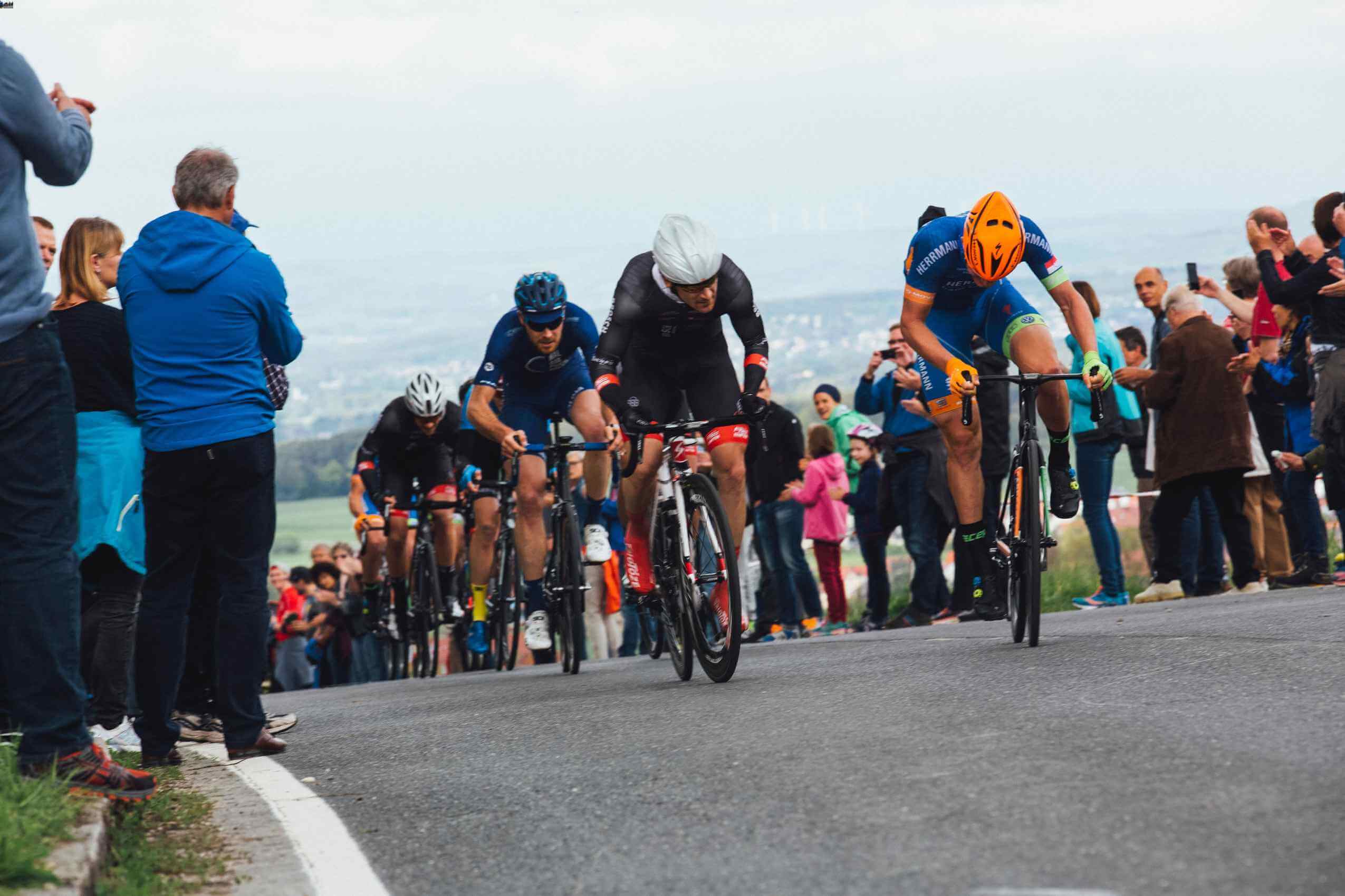
Competing in the Tour de France is not for the faint of heart. The grueling nature of the race requires participants to have exceptional physical endurance and the ability to sustain intense efforts for extended periods.
To better understand the magnitude of the energy demands in the Tour de France, let’s delve into the specific calorie amounts burned during a day of racing and the contrasting energy requirements between mountain stages and flat stages.
Calories Burned During a Day of Racing in the Tour de France
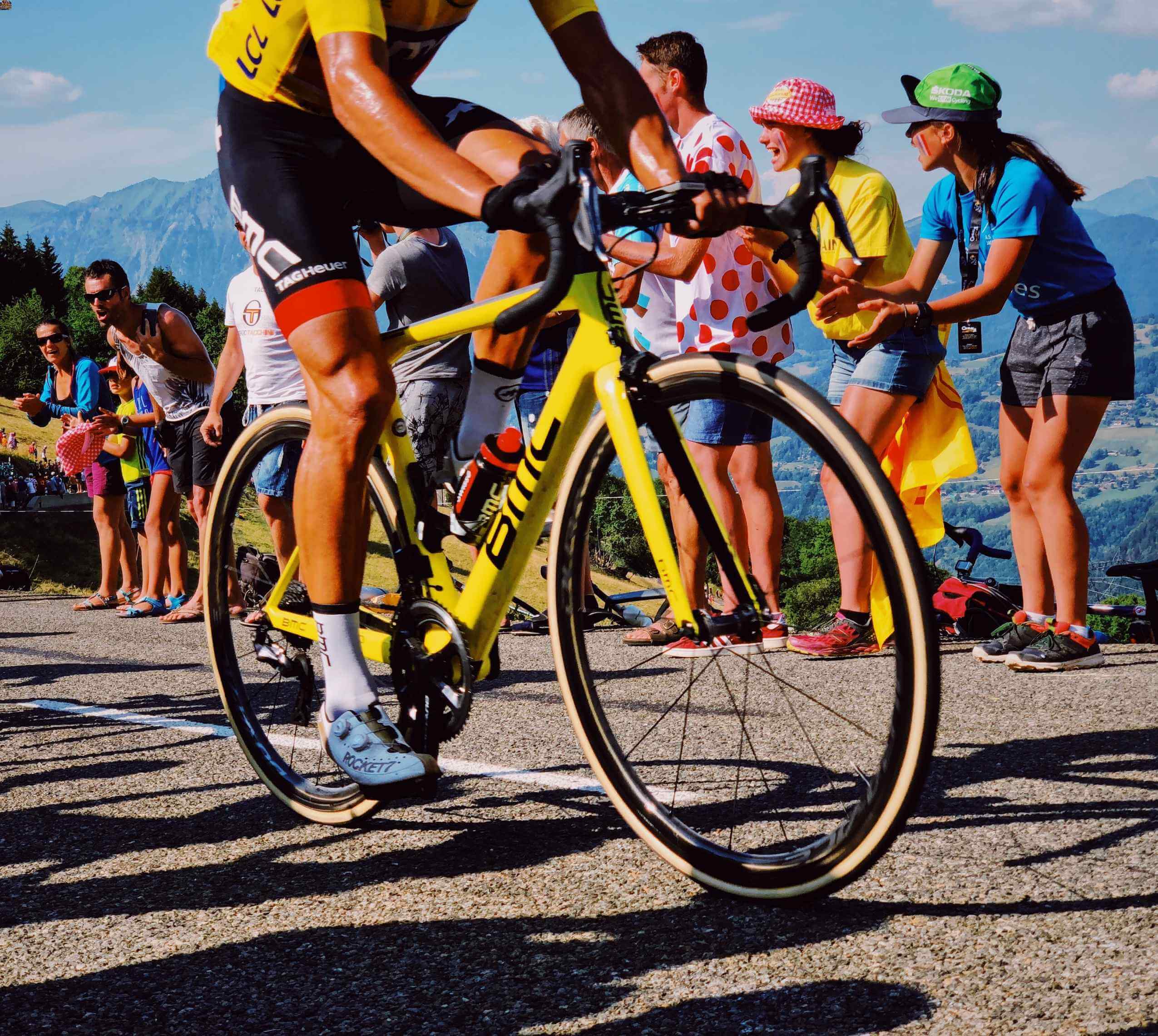
The Tour de France is a multi-stage race that spans over three weeks, with riders covering a total distance of approximately 3,500 kilometers (2,200 miles), spending an average of up to six hours a day on the bike. With only two rest days scattered throughout the race, the Tour de France tests the riders’ endurance, strength, and mental fortitude to the absolute limit.
On average, a professional cyclist can burn between 4,000 to 7,000 calories per day during the Tour de France. The exact number varies depending on factors such as body composition, intensity of effort, duration of the stage, weather conditions, and individual physiology.
To put these numbers into perspective, the average sedentary individual typically requires around 2,000 to 2,500 calories per day to maintain their weight. The caloric expenditure of pro riders during the Tour de France is significantly higher, necessitating a meticulous approach to fueling and nutrition.
You might be thinking that being able to eat a large amount of food every day sounds appealing. After all, who wouldn’t enjoy indulging in an abundance of delicious meals?
However, maintaining such a massive energy intake, as required by pro riders in the Tour de France, presents its own set of challenges. The sheer volume of food needed to fuel their bodies can become overwhelming, and constantly eating to meet their energy demands can feel like a relentless task, especially when they are already extremely fatigued from racing.
Moreover, the strain of consuming such quantities of food can lead to gastrointestinal problems. Riders may experience issues like bloating, indigestion, or even more severe complications, making it vital for them to carefully manage their nutrition. Every year, some riders are forced to withdraw from the Tour de France due to severe stomach issues.
Difference between Mountain and Flat Stages in the Tour de France
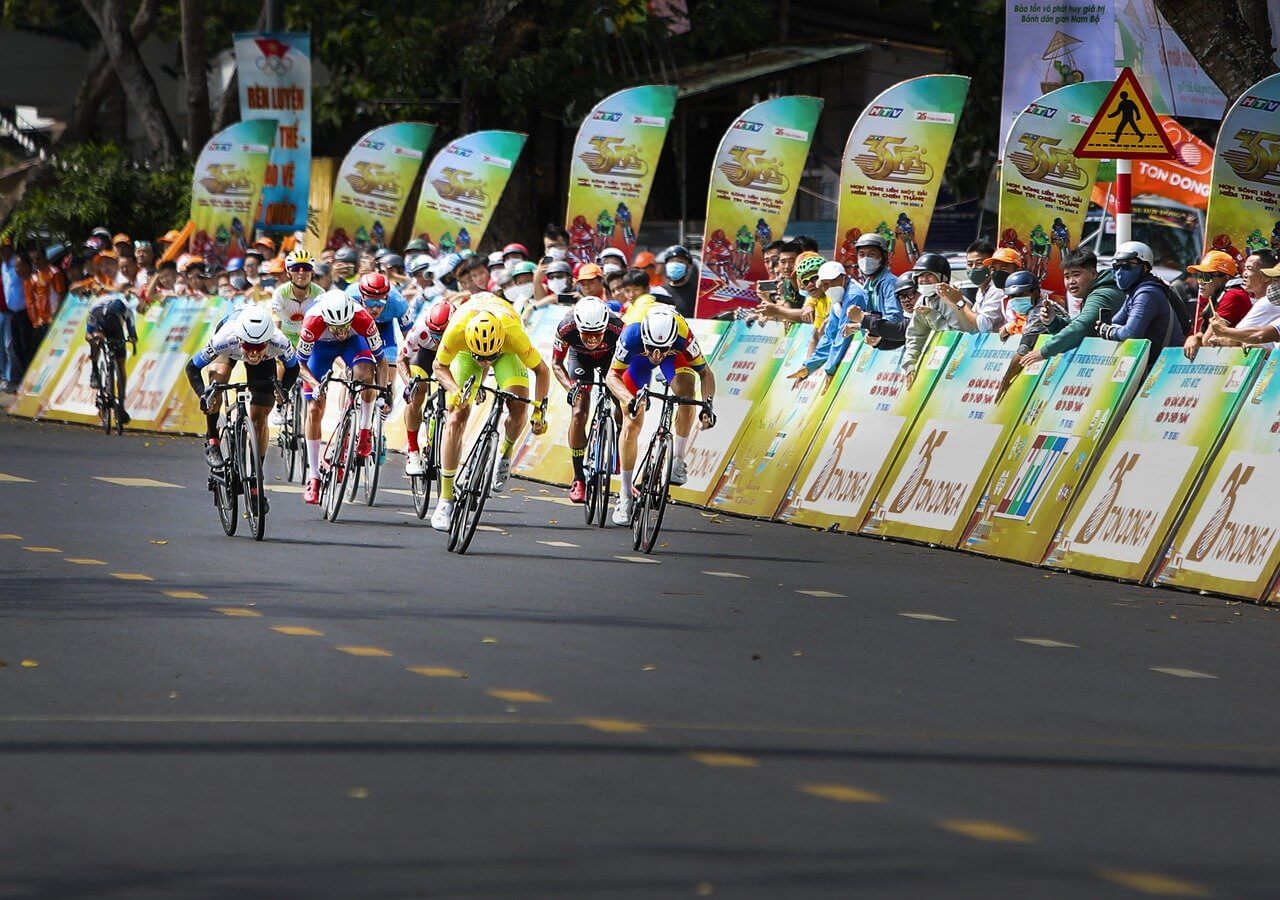
The energy demands in the Tour de France can vary significantly between mountain stages and flat stages. Mountain stages, characterized by grueling ascents and challenging climbs, place immense physiological stress on the riders. The sustained efforts required to conquer these mountains result in higher caloric expenditure compared to flat stages.
During mountain stages, riders may burn an extraordinary amount of calories due to the sustained periods of intense effort. Estimates suggest that riders can expend upwards of 7,000 calories or more on these challenging days.
The prolonged climbs and increased resistance against gravity demand both muscular endurance and cardiovascular fitness, significantly elevating the energy demands.
In contrast, flat stages may not require the same level of sustained intensity as mountain stages. The pace tends to be higher due to flat roads, sprint finishes, and drafting opportunities.
Although the absolute calorie expenditure is lower compared to mountain stages, riders still burn a substantial amount of energy during flat stages. Estimates suggest that riders can expend anywhere between 4,000 to 6,000 calories during these stages, depending on the pace, wind conditions, and race dynamics.
It’s worth noting that the Tour de France includes a combination of mountain stages, flat stages, and time trials, which further diversifies the energy demands throughout the race.
Each stage presents unique challenges, requiring riders to adapt their nutrition strategies accordingly to ensure they have sufficient energy reserves for the specific demands of each day.
Understanding the significant caloric expenditure and varying energy demands in the Tour de France emphasizes the critical role of nutrition in supporting the riders’ performance and overall well-being. Pro riders must carefully plan their fueling strategies to ensure they adequately replenish the energy expended, maintain optimal performance, and avoid the risk of depletion or bonking during the race.
The Role of The Support Team: Chefs, Nutritionists, and Soigneurs
Behind every successful rider in the Tour de France, there is a dedicated support team composed of team chefs, nutritionists, and soigneurs. These professionals play a pivotal role in ensuring that the riders receive the necessary fuel, nourishment, and care to perform at their best throughout the race.

1. Team Chefs: Fueling Performance through Culinary Expertise
Team chefs in the Tour de France are culinary experts who work closely with nutritionists to design and prepare meals that meet the specific nutritional needs of the riders.
Their menus focus on providing the right balance of macronutrients, vitamins, and minerals to support optimal performance and recovery.
From pre-race meals that emphasize carbohydrates and proteins to post-race recovery meals that prioritize glycogen replenishment and muscle repair, team chefs play a crucial role in fueling the riders for success.
2. Nutritionists: Personalized Nutrition for Peak Performance
Nutritionists are essential members of the support team who develop personalized nutrition plans for each rider. They analyze the riders’ dietary needs, monitor their body composition, and adjust their nutrition strategies accordingly.
Nutritionists educate the riders on the importance of proper fueling, hydration, and recovery, ensuring that they make informed choices regarding their nutrition both on and off the bike.
With their expertise, nutritionists optimize the riders’ performance, enhance endurance, and mitigate the risk of fatigue and injuries during the demanding stages of the Tour de France.
3. Soigneurs: Caring for Recovery and Wellness
Soigneurs, or ‘swanny’, often considered the unsung heroes of the peloton, provide vital support in the riders’ recovery and overall well-being. They offer massages, physiotherapy, and other recovery treatments to aid in the riders’ physical recovery.
Soigneurs also assist with ensuring proper hydration, providing post-race nutrition, and attending to any minor injuries or ailments.
They are the people you can see standing on the side of the road in the feed zone, waiting for their riders to come along. As riders approach, soigneurs swiftly hand them a bag of snacks known as a musette, containing energy gels, bars, and cakes, along with a bidon (water bottle) to replenish their fuel and hydration during the race.
This act of delivering nutrition on the go ensures that riders can refuel without losing momentum.
Fueling on the Morning of a Tour De France Stage Race
In the Tour de France, the morning of a stage race is a crucial time for riders to properly fuel their bodies and prepare for the physical demands ahead. Pro riders carefully plan their breakfast to ensure they have the energy and nutrients necessary to sustain their performance throughout the day.
Let’s explore the types of food they typically eat during this essential pre-race period.

Carbohydrate-Rich Breakfast for Sustained Energy
To fuel their muscles and provide a steady source of energy, pro riders prioritize consuming carbohydrate-rich foods for breakfast. These carbohydrates are essential for replenishing glycogen stores, which can be depleted after the previous day of racing. Common breakfast options include:
1. Oatmeal: Riders often opt for a bowl of oatmeal, which is a great source of complex carbohydrates. They may add toppings like berries, nuts, or honey for added flavor and nutritional benefits.
2. Whole Grain Toast: Whole grain bread is another popular choice, offering a mix of fiber and carbohydrates. Riders may top their toast with nut butter, sliced bananas, or a sprinkle of chia seeds for added nutrients.
3. Fresh Fruits: Fruits like bananas, apples, or berries are often included in the riders’ breakfast to provide natural sugars, vitamins, and antioxidants. These fruits offer a refreshing and easily digestible source of carbohydrates.
Protein for Muscle Repair and Satiety
In addition to carbohydrates, pro riders also ensure they consume adequate protein during their pre-race breakfast. Protein supports muscle repair and helps prevent muscle breakdown during the intense efforts of the race. Some protein-rich options for breakfast include:
1. Greek Yogurt: Greek yogurt is a popular choice due to its high protein content. Riders may add fruits, granola, or a drizzle of honey to enhance the flavor and provide additional carbohydrates.
2. Eggs: Eggs are a versatile protein source and can be prepared in various ways, such as scrambled, boiled, or in omelets. They offer essential amino acids necessary for muscle repair and satiety.
3. Lean Meats: Riders may choose lean meats like turkey or chicken breast as a protein source. These options provide high-quality protein with lower fat content, aiding in muscle recovery.

Hydration and Energizing Beverages
Proper hydration is crucial in the morning of a stage race to ensure riders start the day well-hydrated. They may include hydrating beverages and energizing drinks in their breakfast routine:
1. Water: Riders begin their day by hydrating with water to replenish fluids lost during sleep and maintain optimal hydration levels. Hydration is essential for overall performance and helps support proper digestion.
2. Coffee or Tea: Many riders enjoy a cup of coffee or tea to provide a caffeine boost before the race. Caffeine can enhance alertness, focus, and endurance, aiding in performance during the stage.
3. Smoothies: Riders may opt for a refreshing smoothie, combining fruits, vegetables, and a source of protein such as Greek yogurt or protein powder. This option offers hydration, carbohydrates, and protein in a convenient and easily digestible form.
On-the-Bike Nutrition in the Tour de France
Proper nutrition during the race is essential for pro riders to maintain energy levels, delay fatigue, and sustain performance throughout the demanding stages of the Tour de France.
The grueling nature of a typical stage of the Tour de France race demands consistent fueling to prevent any drop in energy that could potentially ruin a rider’s race
Let’s explore the different components of on-the-bike nutrition and the types of food and beverages commonly consumed during the race.
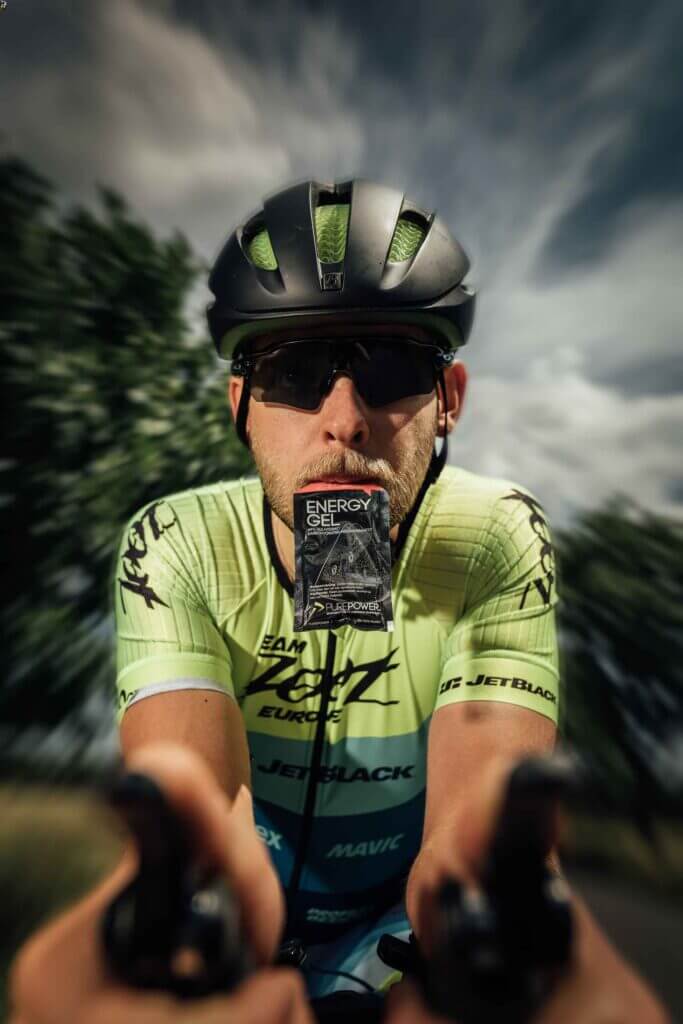
Energy Gels and Bars: Convenient and Quick Fuel
Energy gels and bars are go-to options for pro riders during the race, providing a concentrated source of easily digestible carbohydrates. These compact and portable snacks offer a quick energy boost and are designed to be consumed without interrupting the flow of the race.
Riders can easily tear open an energy gel packet or unwrap an energy bar and consume them on the go, allowing for efficient refueling.
Energy gels typically contain a mix of simple and complex carbohydrates, often including glucose and fructose, to provide an immediate and sustained release of energy.
Energy bars, on the other hand, offer a more substantial snack with a combination of carbohydrates, proteins, and sometimes fats. These bars may include ingredients such as oats, nuts, dried fruits, and honey.
The riders’ preference for gels or bars depends on personal taste, texture, and individual digestive tolerance.
Sports Drinks and Electrolyte Replacement: Hydration and Fuel in One
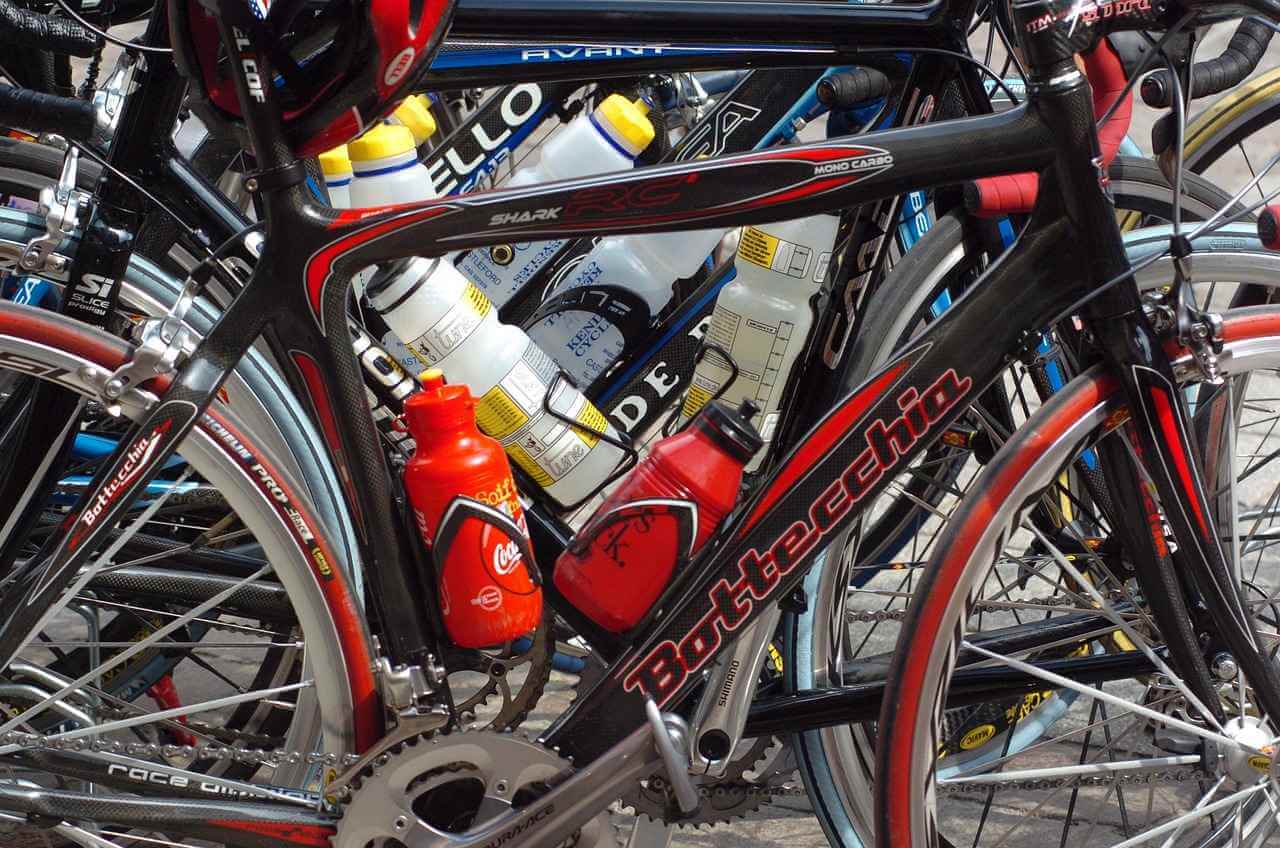
Sports drinks formulated specifically for endurance events play a vital role in on-the-bike nutrition. These beverages provide a combination of carbohydrates and electrolytes to replenish fuel and essential minerals lost through sweat.
Pro riders rely on sports drinks to maintain hydration, optimize fluid absorption, and support electrolyte balance during the race.
Sports drinks typically contain a mix of glucose, fructose, or maltodextrin as carbohydrate sources. These carbohydrates are easily absorbed and provide a readily available energy source for the riders.
Electrolytes such as sodium, potassium, and magnesium are also included to help replace what is lost through sweating and maintain proper muscle function. By incorporating sports drinks into their on-the-bike nutrition plan, riders can stay hydrated, sustain energy levels, and reduce the risk of dehydration and cramping.
Real Food Options: Sustained Energy and Variety
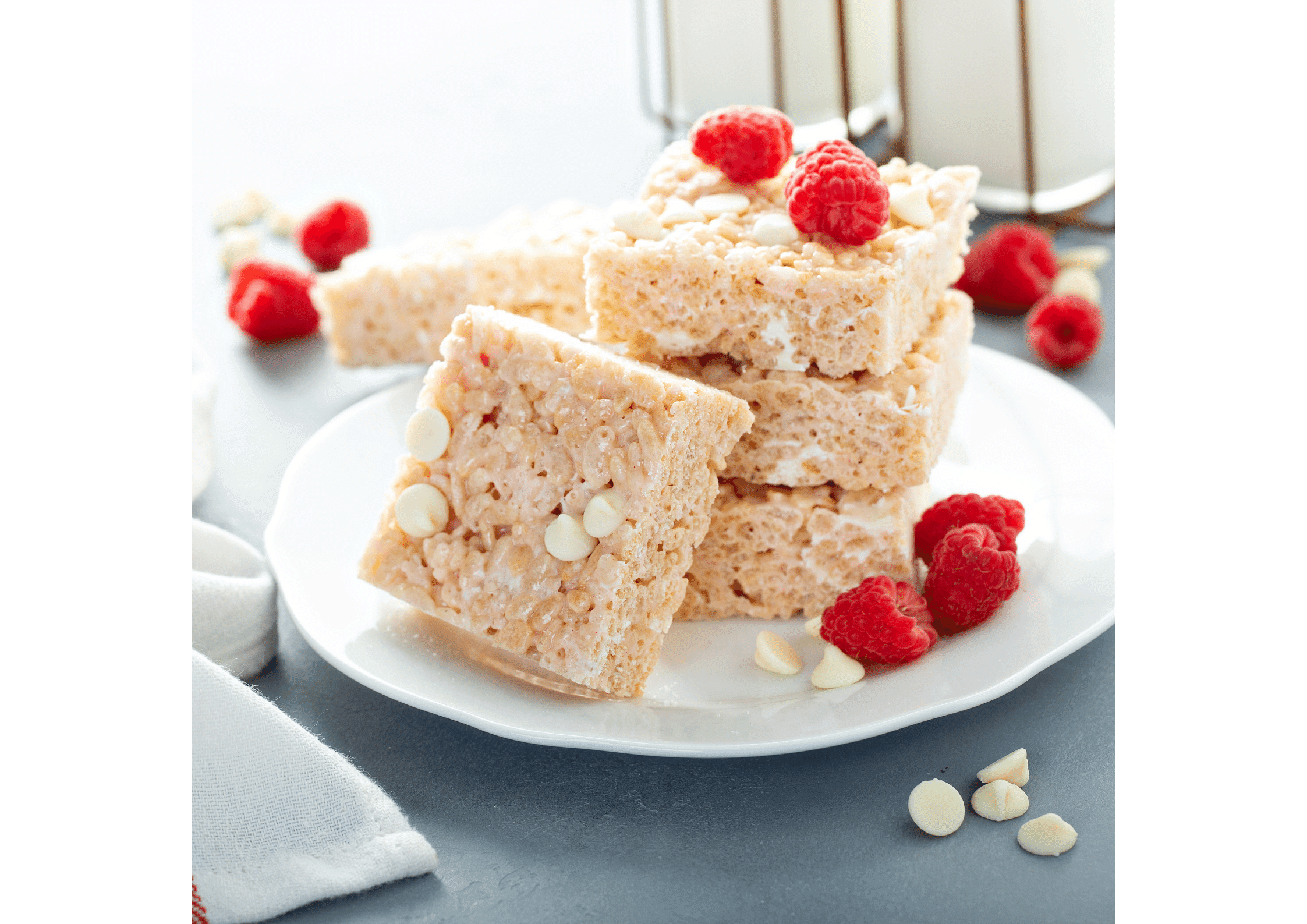
While energy gels and sports drinks are popular choices, pro riders often incorporate real food options into their on-the-bike nutrition plan as well.
The inclusion of real food options in on-the-bike nutrition allows riders to have variety, texture, and flavors that may be more enjoyable during the race.
Some common real food options for on-the-bike nutrition include:
- Sandwiches: Riders may carry sandwiches filled with lean proteins like chicken or turkey, along with whole-grain bread for a source of carbohydrates. These provide a balanced mix of macronutrients and offer sustained energy.
- Fruits: Fresh fruits such as bananas, oranges, or grapes are excellent choices due to their natural sugars, vitamins, and minerals. They provide a refreshing and easily digestible source of carbohydrates.
- Nuts and Trail Mix: Riders may carry small packs of nuts or trail mix, which offer a mix of healthy fats, protein, and carbohydrates. These options provide sustained energy and can help satisfy hunger during long rides.
- Homemade Rice Cakes: Rice cakes made with cooked rice, honey, and other ingredients like dried fruits or nuts can be a homemade option for on-the-bike nutrition. These rice cakes offer a combination of carbohydrates and flavors tailored to individual preferences.
Post-Race Recovery and Refueling in the Tour de France
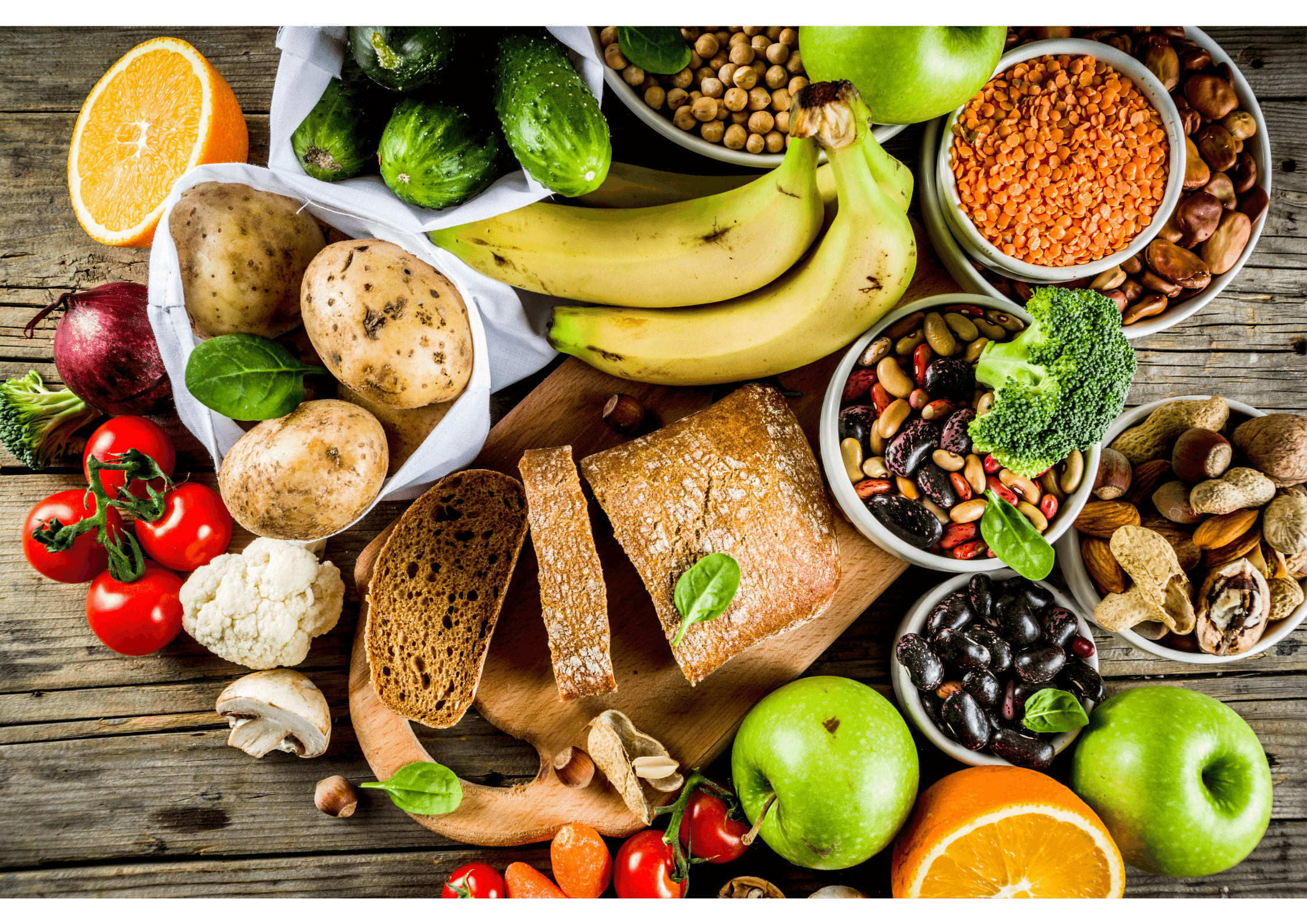
After crossing the finish line of a grueling stage in the Tour de France, pro riders shift their focus from the intensity of the race to the crucial process of post-race recovery and refueling.
This phase plays a vital role in repairing damaged muscles, replenishing depleted energy stores, and preparing the body for the subsequent stages.
The collaborative effort between nutritionists and team chefs guarantees that the riders receive the necessary nutrients and support to enhance their recovery process and prepare them for the next stage of the Tour de France.
Let’s delve into the key components of post-race recovery and refueling that pro riders prioritize.
Carbohydrate Replenishment: Restoring Glycogen Stores
One of the primary goals of post-race recovery is to replenish glycogen stores in the muscles, which become depleted during the intense efforts of the race.
Pro cyclists understand the importance of consuming carbohydrates immediately after the race to kickstart the replenishment process. Carbohydrates stimulate the release of insulin, which enhances the uptake of glucose into the muscles and facilitates glycogen synthesis.
To achieve effective carbohydrate replenishment, riders often consume a combination of fast-digesting carbohydrates and slower-releasing complex carbohydrates.
Fast-digesting carbohydrates, such as fruits or sports drinks, provide an immediate source of glucose to rapidly replenish glycogen. Slower-releasing complex carbohydrates, like whole grains or sweet potatoes, offer a sustained release of glucose over a more extended period, helping to ensure a steady supply of energy for recovery and subsequent stages.
Protein Intake: Muscle Repair and Growth
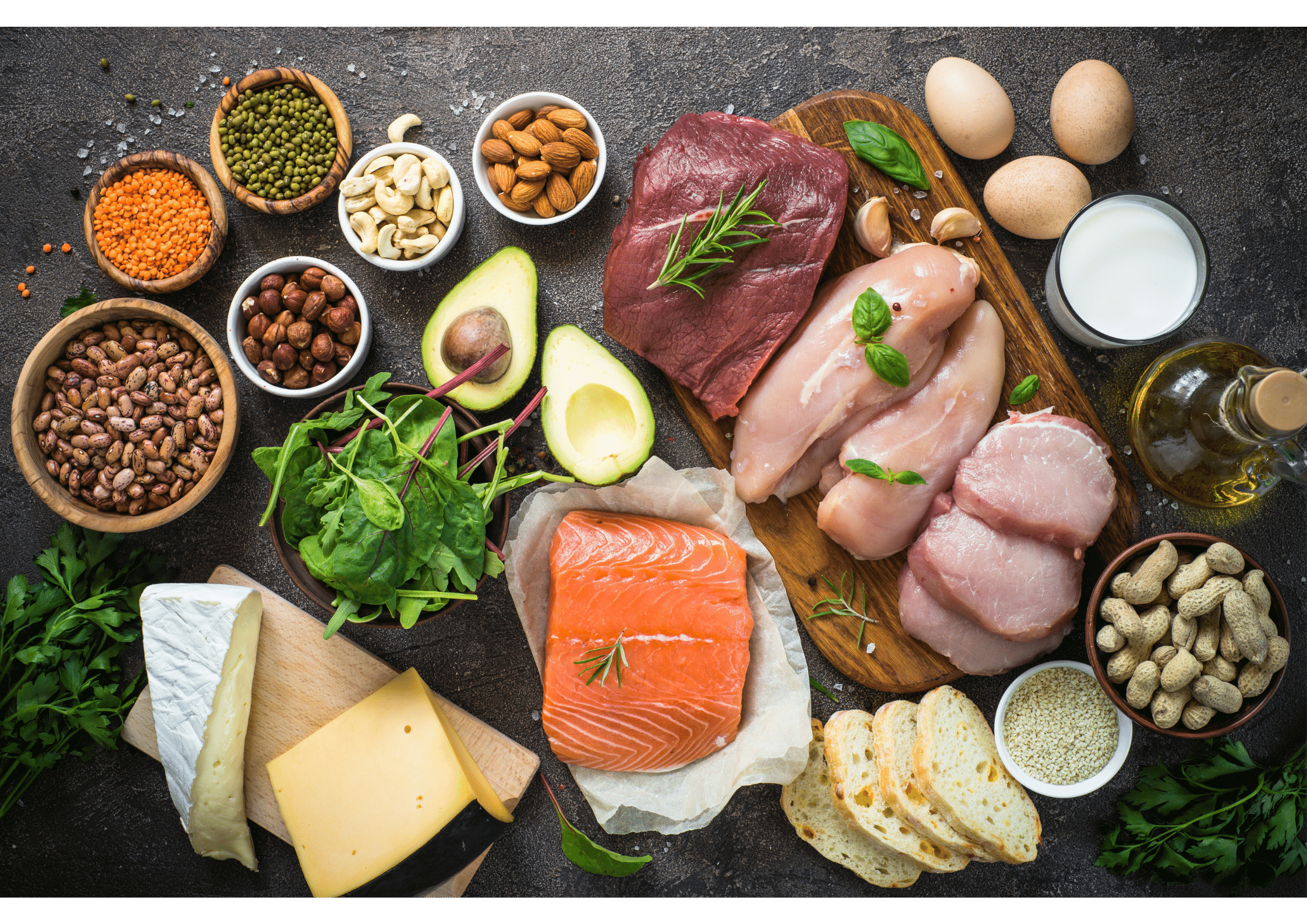
Alongside carbohydrate replenishment, pro riders prioritize protein intake to facilitate muscle repair and growth. The intense efforts of the race cause micro-tears in the muscles, and adequate protein consumption is crucial for their recovery.
Protein provides the necessary building blocks (amino acids) for repairing damaged muscle fibers and stimulating muscle protein synthesis.
Common protein sources for post-race recovery include lean meats, poultry, fish, dairy products, or plant-based alternatives such as tofu or legumes.
The team chefs often provide meals that combine carbohydrates and protein to maximize the recovery process. For example, a grilled chicken breast with quinoa or a bowl of Greek yogurt with berries and granola can provide a balanced mix of carbohydrates and protein, aiding in muscle repair and replenishment.
Hydration and Electrolyte Replacement: Rebalancing Fluids and Minerals
Hydration is a critical aspect of post-race recovery, as riders often experience significant fluid loss through sweating during the race. Replenishing fluids is essential to restore hydration levels and optimize recovery.
Riders typically consume water or electrolyte-rich beverages to replenish fluids and replace electrolytes lost during the race, such as sodium, potassium, and magnesium.
Sports drinks formulated for recovery often contain a balanced combination of carbohydrates and electrolytes, providing an all-in-one solution to rehydrate and replenish essential minerals.
In addition to fluid intake, riders may also include hydrating foods like watermelon or cucumber, which have high water content, to further support hydration during the recovery phase.
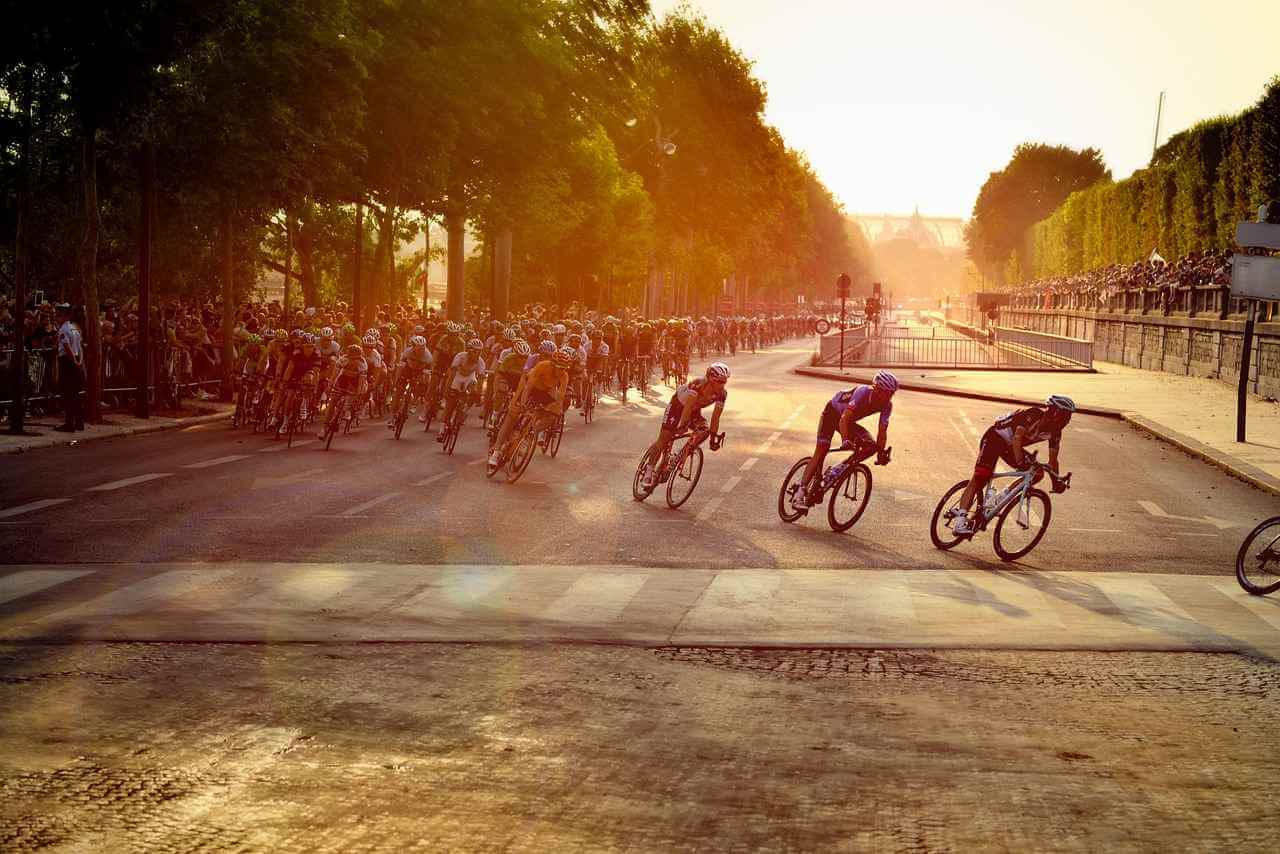
Anti-Inflammatory Foods: Reducing Inflammation and Promoting Recovery
To aid in the reduction of inflammation and promote recovery, pro riders often incorporate anti-inflammatory foods into their post-race meals. These foods contain compounds with potential anti-inflammatory properties, such as omega-3 fatty acids, antioxidants, and polyphenols.
Common examples of anti-inflammatory foods include fatty fish like salmon, leafy green vegetables, berries, turmeric, and ginger.
By including anti-inflammatory foods, riders aim to minimize muscle soreness, inflammation, and oxidative stress, allowing for faster recovery between stages. These foods can provide additional health benefits and support overall well-being, contributing to the riders’ ability to sustain their performance throughout the Tour de France.
Rest and Sleep: The Importance of Recovery
Beyond nutrition, rest and sleep are essential components of post-race recovery. Riders prioritize adequate rest to allow the body to recover, repair damaged tissues, and recharge for subsequent stages.
Quality sleep plays a crucial role in hormone regulation, immune function, and overall recovery. The cyclists strive to establish consistent sleep routines, ensuring sufficient hours of restful sleep each night.
Incorporating post-race recovery practices into their routine allows pro riders to optimize their performance, reduce the risk of injuries, and maintain a competitive edge throughout the demanding stages of the Tour de France.
FAQ About Tour De France nutrition
Can pro riders in the Tour de France eat anything they want?
While pro riders in the Tour de France have high energy requirements and consume significant amounts of food, they cannot eat anything they want without considering the nutritional quality of their choices. The focus is on consuming nutrient-dense foods that provide the necessary fuel and support for performance and recovery.
A balanced and well-planned diet is crucial to meet their specific nutritional needs and optimize their performance throughout the demanding stages of the race. Additionally, adherence to anti-doping regulations and the pursuit of overall health and well-being are important considerations that guide their dietary choices.
Should amateur cyclists try to replicate the nutrition strategies of pro riders in the Tour de France?
While it can be tempting to emulate the nutrition strategies of pro riders in the Tour de France, it is important for amateur cyclists to approach this with caution. The nutritional needs and training demands of professional riders differ significantly from those of amateurs. Pro riders have access to dedicated support teams, nutritionists, and chefs who tailor their nutrition plans to their specific requirements.
Amateurs, on the other hand, may not have the same level of support or need for such high energy intake. It is advisable for amateurs to focus on a balanced and individualized nutrition plan that aligns with their training goals, overall health, and personal preferences. Consulting with a sports nutritionist or registered dietitian who specializes in cycling can help amateurs develop an appropriate nutrition strategy tailored to their needs.
Is the diet of a pro rider considered healthy?
The diet of a pro rider is generally focused on meeting the high energy demands of their intense training and racing schedule. Pro riders often consume a significant amount of carbohydrates, including sugars, to provide quick energy during races and aid in recovery. While these sugars are a necessary component of their nutrition plan, the excessive consumption of sugar can raise concerns about the long-term health impact.
However, it’s important to consider that pro riders engage in intense physical activity and have higher energy needs compared to the general population. They also work closely with nutritionists to balance their carbohydrate intake with other nutrient-dense foods, such as lean proteins, fruits, vegetables, and whole grains, to support overall health.
How important is body weight and composition for pro riders in the Tour de France?
Body weight and composition play a significant role in a pro rider’s performance. They strive to achieve an optimal balance between power output and weight to excel in climbing stages while maintaining sufficient strength and endurance. Nutrition plans are carefully designed to support this balance while ensuring adequate energy intake and overall health.
How has nutrition for pro riders in the Tour de France evolved over the years?
Nutrition for pro riders in the Tour de France has undergone significant evolution. In earlier years, nutrition strategies often revolved around traditional high-carbohydrate diets without much emphasis on specific nutrient timing. However, with advancements in sports nutrition research, the understanding of optimal fueling and recovery has improved.
Today, there is a greater emphasis on individualized nutrition plans, including the timing and composition of meals, personalized hydration strategies, and the use of sports science to enhance performance. The integration of nutritionists, team chefs, and support teams has also become more prevalent, allowing for a more comprehensive and scientifically-driven approach to the riders’ nutrition.
Do pro riders in the Tour de France still use performance-enhancing drugs today?
The use of performance-enhancing drugs in professional cycling, including the Tour de France, has been a significant concern in the past. However, extensive anti-doping efforts have been implemented to ensure a clean and fair competition.
Riders undergo rigorous testing and are subject to strict anti-doping regulations enforced by organizations such as the World Anti-Doping Agency (WADA). While it is impossible to guarantee that every rider remains free of performance-enhancing substances, the stringent testing and penalties for doping violations aim to deter and detect any illicit drug use. The focus is on promoting fair play, integrity, and the health and well-being of the athletes involved.
